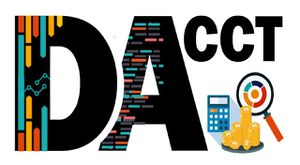Difference between revisions of "ANLY482 AY2017-18T2 Group18/TeamDAcct Scope"
Zqlow.2014 (talk | contribs) |
Zqlow.2014 (talk | contribs) |
||
| Line 55: | Line 55: | ||
The steps in detail are as follow: | The steps in detail are as follow: | ||
[[Image:scopev1.png|800px|center]] | [[Image:scopev1.png|800px|center]] | ||
| − | The above figure shows the | + | The above figure shows the scope for our study. After streamlining the business problem, we first had series of interviews with the management to understand the current process of cost-estimation. Based on the understanding of the current cost-estimation process, we identified key data sources and prepared the data. However, data preparation period took a considerably long time due to several challenges we faced. With the data prepared, we conducted exploratory data analysis to uncover insights on major cost driver components. This process deepened the understanding of the client’s business process and accounting practices. From here, we decided to focus our analysis efforts on conservancy projects due to lack of data for MOE projects which only has 3 months of data and also due to lack of standardised details of projects for Private Housekeeping projects. We then selected multiple linear regression analysis for our model based on various literature reviews as well as recommendations by the professors. We conducted the analysis in various ways to get the optimal result and to improve the explanatory power of the model for the cost incurred for each project, given the details of the project. |
Latest revision as of 20:27, 13 April 2018
| Home | About Us | Project Overview | Project Findings | Project Management | Documentation | ANLY482 Homepage |
The steps in detail are as follow:
The above figure shows the scope for our study. After streamlining the business problem, we first had series of interviews with the management to understand the current process of cost-estimation. Based on the understanding of the current cost-estimation process, we identified key data sources and prepared the data. However, data preparation period took a considerably long time due to several challenges we faced. With the data prepared, we conducted exploratory data analysis to uncover insights on major cost driver components. This process deepened the understanding of the client’s business process and accounting practices. From here, we decided to focus our analysis efforts on conservancy projects due to lack of data for MOE projects which only has 3 months of data and also due to lack of standardised details of projects for Private Housekeeping projects. We then selected multiple linear regression analysis for our model based on various literature reviews as well as recommendations by the professors. We conducted the analysis in various ways to get the optimal result and to improve the explanatory power of the model for the cost incurred for each project, given the details of the project.

